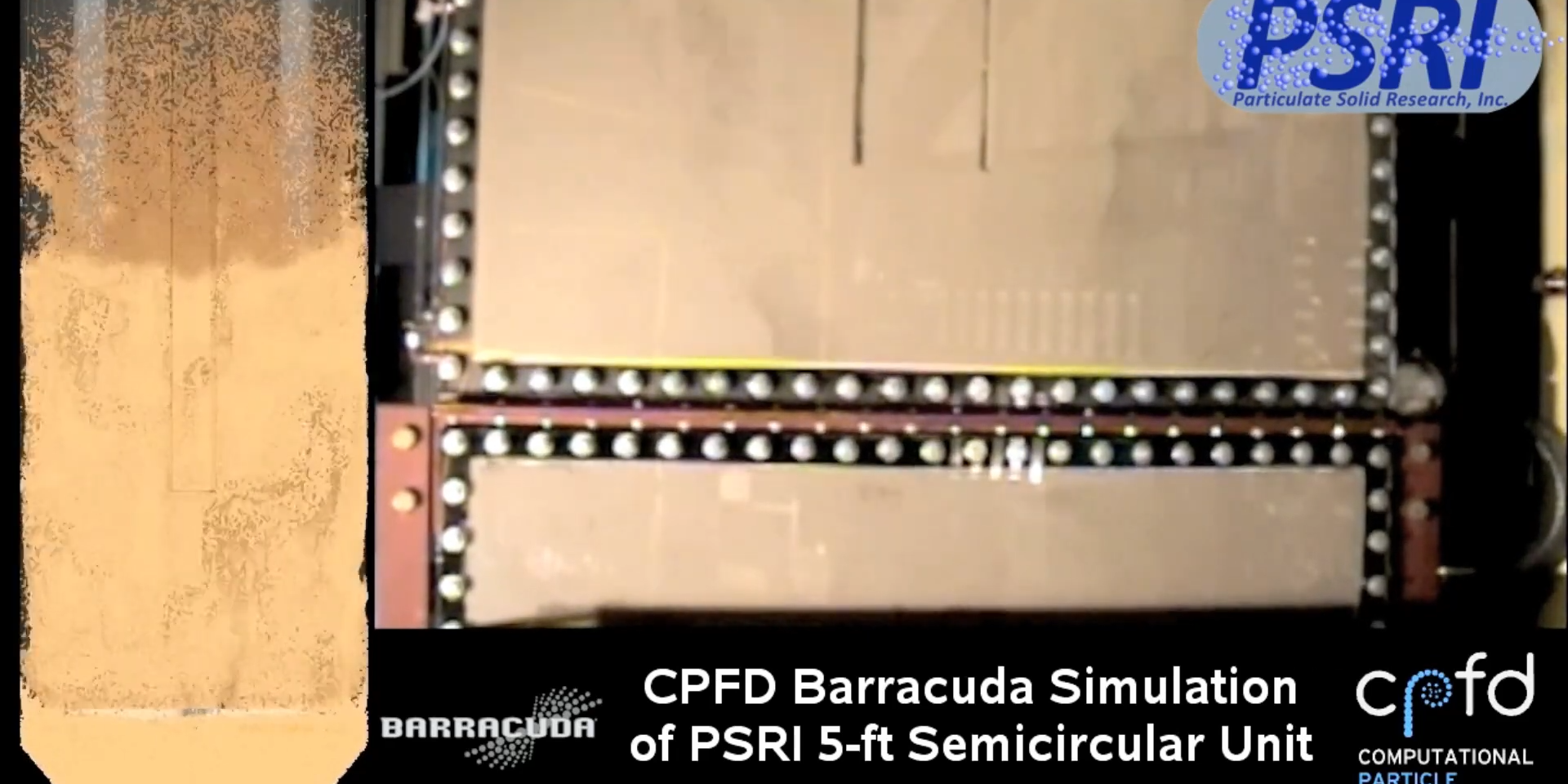About This Video
This video shows Barracuda Virtual Reactor® simulations results on the left, compared with large-scale test data from Particulate Solid Research, Inc. (PSRI) on the right. The gas-solids hydrodynamics demonstrates typical behavior for Geldart Group A particles in a fluidized bed. The transient, multiphase, commercial CFD simulation captures the same basic physics observed in the 5-foot, semi-circular test unit, including the dense phase, emulsion phase, discrete bubbles, bed density, bed expansion, free-board (dilute phase), and catalyst entrainment. This example uses FCC catalyst for the particles.
In this case the true fluidization behavior is apparent thanks to the transparent surface in the PSRI test unit. This type of validation give Virtual Reactor™ users confidence when analyzing industrial scale systems including FCCU reactors and regenerators, petrochemical reactors (polyethylene, polypropylene, acrylonitrile (AN), vinyl chloride monomer (VCM), melamine, etc.), cement calciners, and the many fluidized applications involving polysilicon production, gasification, pyrolysis, CFB boilers, flue gas desulphurization (FGD), TiO2 production, chemical looping combustion (CLC), carbon capture, pneumatic transport, and more by reducing scale-up risk (bench-scale, pilot-scale through commercial-scale). For operating units, Virtual Reactor modeling has enabled our clients to increase the reliability and performance of their processes by:
Identifying root cause of underperformance
Virtual testing of design or operational changes
Minimizing the risk of unintended consequences of proposed changes
Highlighting additional optimization opportunities.
Visit our FCC Resources page for more about CPFD’s involvement with digitalization of refining applications.
Visitors from China who are unable to view this view are invited to view it on the Chinese Yanfabu website (中国研发埠学习平台) by clicking here.

